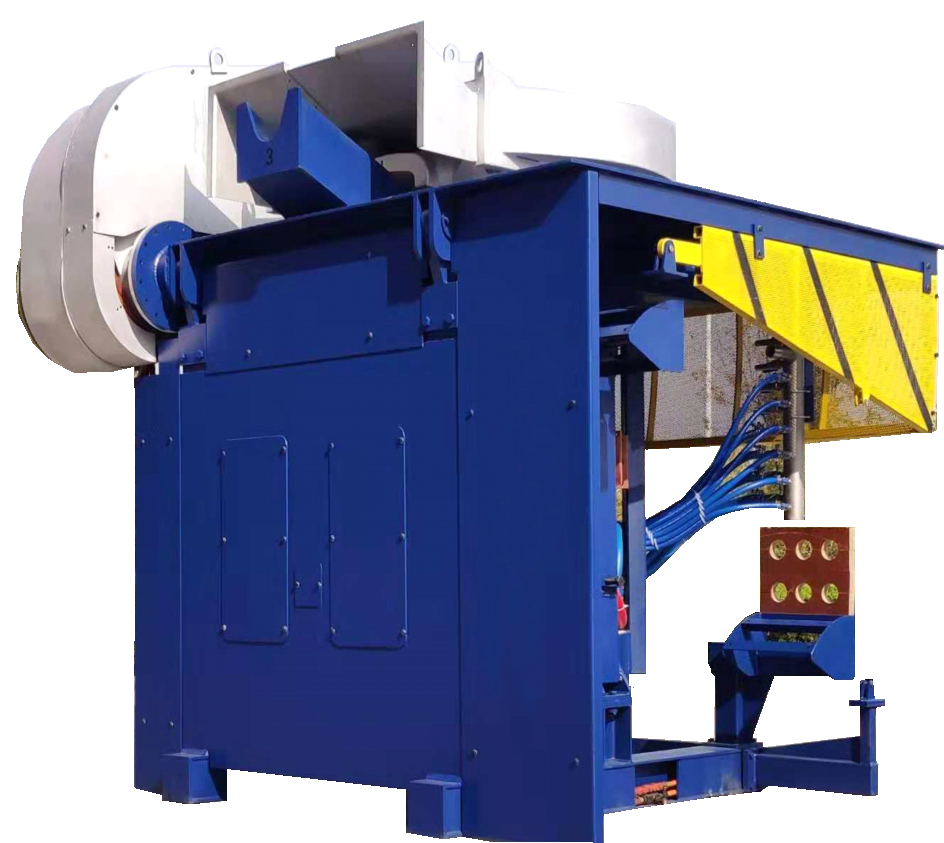
洛阳松导感应加热科技有限公司
联系方式:15038554363
24小时技术热线:15038554363
邮 箱:1390003299@qq.com
厂址:河南省洛阳市洛新工业园区
关于超流体和其他特殊材料的统一原理
物质在非常低的温度条件下会展示出一些很奇怪的特性,拿超流体作为例子:这些超流体是在1937年被发现的,他们可以一直在不受阻力的情况下流动,并会很奇怪的爬到容器壁上,然后滴到地板上。将振动收集到一个晶体里就叫做声子,声子是一种Nambu-Goldstone波色子,UC Berkeley物理学家证明出通过计算材料中(无论是一个固态晶体,一个磁体,或者一个超流体)的波色子的数量,你就能发现材料会在对称性被破坏的低温条件下所产生的习性类型。(Credit: Haruki Watanabe/UC Berkeley.)
在过去的100年中,11个诺贝尔奖被授予给了将近24个人,由于这种冷材料(超导体和Bose-Einstein冷凝物)的发现或理论性解释,然而,对于这些极端行为的一致性理论仍然困扰着理论学家。
University of California, Berkeley大学的物理学家Hitoshi Murayama和研究生Haruki Watanabe目前在这些材料中发现了一种共性,这可以被用来预测和设计能够展示出不同习性的新材料。这个理论被发表在了Physical Review Letters杂志6月的第8期上,他可以被应用到磁体、晶体、中子星和宇宙弦中。
诺贝尔奖获得者Yoichiro Nambu早期提出的理论预测道磁体自旋会在两个单独的方向震荡,因此,这些磁体会产生两个Nambu-Goldstone波色子。这个新理论展示了在铁磁体中,这两种波不是相互独立的,以至于只有一个Nambu-Goldstone波色子——上面已经提到的一种先行波。Credit: Haruki Watanabe/UC Berkeley。
“这是一个非常令人兴奋的结果,因为他涉及到了物理学的许多领域,不仅是浓缩物质物理学,还有天体物理学、原子颗粒和核物理学和宇宙学,”Murayama说道,他是UC Berkeley大学的物理学教授,同时也是Lawrence Berkeley National Laboratory实验室的资深科学家和University of Tokyo大学Kavli Institute for the Physics and Mathematics of the Universe协会的主任,“我们正在努力将这些研究结果结合到一个理论框架中。”
Watanabe和Murayama所证明出的这个原理是基于自发对称性破坏的概念所产生的,这种现象会在低温条件下发生,并且会导致一些奇怪特性的出现,这也产生了超导体——能够使电流在无阻力的条件下通过;或者Bose-Einstein冷凝物——具有非常低的能量,以至于每个原子都会处在同样的量子态中。
通过根据材料中的集体习性来描述这种对称破坏性——被所谓的Nambu-Goldstone波色子所代表——Murayama和Watanabe发现了一个区分材料的奇怪特性的简单方法,波色子是带有零或整数自旋的颗粒的名称,他与费米子(带有半整数的自旋)截然相反。
“一旦人们告诉我系统是以什么对称开始和什么对称结束的,和这些被破坏的对称性是否能够相互交换,那么我就可以准确的计算出会有多少个波色子,和他是否会产生出一些奇怪的特性,”Murayama说道,“我们在超过10个的系统中对他进行了测试,并且他每次都会产生出预计的结果。”
来自University of Illinois at Urbana Champaign大学的Anthony Leggett在2003年获得了物理学的诺贝尔奖,由于他对超流体进行的首创性研究,他指出很早之前人们就知道自发性的对称破坏(无论是发生在颗粒物理学中或冷凝物理学中)的一个重要影响就是被称作Nambu-Goldstone波色子的长波集体刺激物的存在。
“在他们的论文中,Watanabe和Maruyama目前获得了一个关于Nambu Goldstone波色子之间的关系,这能够帮助我们对所有相关的情形进行复制,并且能够给出一个简单的框架来讨论目前还不了解的排列形式——也许会在未来发现。
“令人惊奇的是,低能谱中的自发性对称破坏的应用还没有被实施,直到Watanabe和Murayama的论文发表以后,”Hirosi Ooguri描述道,他是Caltech的一名物理学和数学教授,“我希望这项研究结果能够产生一系列的应用,从冷凝物理学到宇宙学。这是数学和物理学领域的一项伟大发现。”
对称性
在近100年来,对称性一直是物理学领域的一个有力的概念,他能够使科学家发现一些统一的原理,并提出一些能够描述现在和早期宇宙中基本颗粒和力是如何进行交互作用的理论,这种Z简单的对称是三维的旋转对称:例如,当你将一个球体在任何方向进行旋转的时候他看起来都是一样的,然而,一个圆柱体会绕着他的轴产生单一的旋转对称。
一些交互作用对于时间来说是对称的,也就是说无论你适时的将他往前进还是向后退,他们看起来都是一样的。其他对称的情况是你将一个颗粒代之以他的反颗粒。
当对称被自发的破坏时就会出现一些新的情况,随着创世大爆炸,宇宙被冷却了下来,直到他的对称性被自发的破坏掉,这也导致了一个预测性的Higgs波色子的出现——他目前正在被位于瑞士日内瓦的Large Hadron Collider所探寻。
在固体、液体和气体中,对称跟原子和电子的自旋相关联,在一种铁磁材料里,例如铁或镍,电子在高温中自旋的随意性会使材料在所有方向都对称起来,然而,随着金属的冷却,电子的自旋就会被锁定,并使他们的邻居也在同样的方向被锁定,以至于磁铁会在一个方向产生一个大型的磁场。
Nambu-Goldstone波色子是一个材料中的连贯性集体行为,例如声波或声子是一个晶体中原子的集体共振,一个晶体中电子自旋的刺激波被称作铁磁子。在铁磁体冷却的过程中,有两个对称会自发的破坏掉,只留一个Nambu-Goldstone波色子在材料中。
例如,在Bose-Einstein冷凝物中,“你以一个薄薄的原子气体开始,将他冷却到非常低的温度下,并且一旦达到这个温度,原子就会以奇怪的方式连接在一起,”Murayama说道,“他们获得了这个非常有趣并且能够产生一个Nambu-Goldstone波色子的振动模式,原子的这种气体会重新变成超流体,以便他可以不带任何粘度进行流动。”
另一方面,固态晶体(不管他们的组成和结构)都会有三个Nambu-Goldstone波色子——相当于三个振动模式(声子)。
“这种Nambu-Goldstone波色子是什么?他们的数量有多少?他们的习性取决于什么?其他事物是否会变成一个超流体?事物是如何随着温度的变化而变化的?”Murayama补充道,“所有这些特性都取决于我们是如何理解这种Nambu-Goldstone波色子的。”
Yoichiro Nambu获得了2008年的物理学诺贝尔奖,部分原因是因为他解释了在一些系统中,对称性破坏的数量相当于Nambu-Goldstone波色子的数量。
这个新的原理将Nambu的理念扩展到了更多的情况中,Watanabe说道,这证明了在这些特殊材料中,Nambu-Goldstone波色子的数量实际上少于破坏对称的数量。
“Nambu所展示的是正确的,但是只有一些特殊的情况能够适用于这种颗粒物理学中,”他说道,“目前,我们对于所有这些物理学现象都进行了一个统一的解释,并且无一例外。”
低Nambu-Goldstone波色子数量态的一个特征是他需要很少的能量来干扰系统的运行,流体会在超流体中自由的流动,而原子会在轻微移动的Bose-Einstein冷凝物中一直震动。
作为University of Tokyo大学的一名学生,Watanabe已经提出了一个能够通过Nambu-Goldstone波色子来解释材料特性的原理,但是他还不能对此进行证明,直到他去年来到UC Berkeley大学并与Murayama进行交流以后,然后,他们一起在两周的时间里提出了一个他们称作Nambu-Goldstone波色子统一理论的证据。
“那两周的时间的确非常令人兴奋,”Watanabe说道。
Metal Alloy(金属合金)
Cheaper Catalysts With the Finest Gold Dust in the World
Scientists at the Vienna University of Technology found a method to locate single gold atoms on a surface. This should pave the way to better and cheaper catalysts.
Most people value large chunks of gold -- but scientists at the Vienna University of Technology are interested in gold at the smallest possible scale, because single gold atoms are potentially the most reactive catalysts for chemical reactions. However, when gold atoms are placed on a surface they tend to ball up into tiny nuggets consisting of several atoms. A team of surface scientists now managed to fix single gold atoms on special sites of an iron-oxide surface. This could open the door to more efficient catalysts, requiring less of the precious material.
Gold Does Not Like to Be Alone
Gold is a noble metal and does not usually bond with other elements, but as a catalyst it facilitates chemical reactions. It can, for example, facilitate the conversion of poisonous carbon monoxide to carbon dioxide. The effectiveness of gold as a catalyst depends on the size of the gold particles. Some evidence suggests that it works best if the gold is present in the form of single atoms. So far, however, this could not be studied in detail. "If individual gold atoms are put on a surface, they usually cluster up, forming nanoparticles," says Gareth Parkinson, who oversaw the experiments in the research group of Professor Ulrike Diebold at the Institute for Applied Physics at the TU Vienna.
Hot Surfaces -- Loose Atoms
Higher temperatures lead to a higher mobility of the gold atoms, so in order to stop the atoms from clustering, most surfaces must be cooled to a temperature so low that the desired chemical reactions would stop entirely. The researchers at the TU Vienna found a special kind of iron-oxide surface, which locks the single gold atoms in place.
A Good Place to Settle Down
The key to success is a slight deformation of the iron-oxide crystal structure. The oxygen atoms of the topmost layer are not aligned in perfectly straight lines, they are bent into wiggles by the atoms below. At the points where the lines of oxygen atoms are close to each other, the gold atoms attach permanently without losing grip. Even if the surface is heated, the gold atoms stay put -- only at 500 degrees celsius they start forming clusters. "When a gold atom hits the iron oxide surface, it diffuses to one of the sites where it can be attached to the surface," says Gareth Parkinson. That way, many single gold atoms can be placed close to each other. When a gold atom hits a position already occupied by another gold atom, however, the two bond and start moving across the surface, picking up additional gold atoms along the way. When they have reached a critical size of at least five atoms, they become immobile again and the miniature gold nugget comes to rest.
New Paths for New Research
Ulrike Diebold expects that the new method will answer important open questions about catalysis. "We have created an ideal model system for probing the chemical reactivity of single atomic species," says Diebold. The recent experiments will also help to advance theoretical research: the quantum mechanically complex bonding between single atoms and this particular surfaces provide an excellent test case for theoretical calculations of highly correlated electron systems.
手 机:15038554363



















